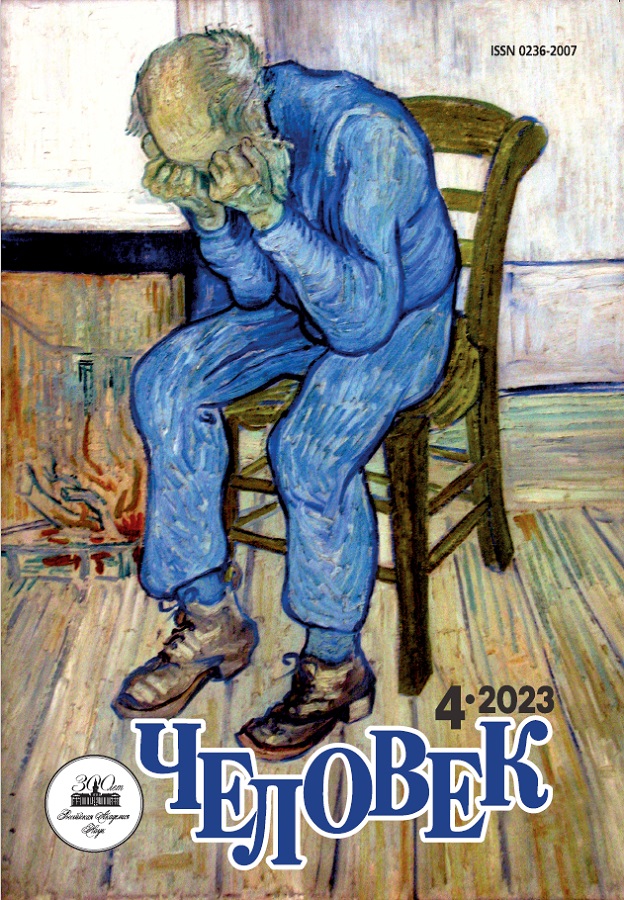Stress-inducing Objects like Jack-in-the-box: Adults’ behavior and their reactions to Сhildren’s and other Adults’ reactions
- Авторлар: Poddiakov A.N.1
-
Мекемелер:
- HSE University
- Шығарылым: Том 34, № 4 (2023)
- Беттер: 27-38
- Бөлім: Times. Morals. Characters
- URL: https://archivog.com/0236-2007/article/view/670670
- DOI: https://doi.org/10.31857/S023620070027351-3
- ID: 670670
Дәйексөз келтіру
Аннотация
We consider a special class of cultural objects like Jack-in-the-Box. They are scary for many children. Screamers from horror movies and computer video games are phenomena of the same type. We analyze Internet videos in which adults organize children’s encounters with Jack-in-the-Boxes and comments under the videos. Some adults are upset about the children’s fear and cry, but some others enjoy it. In the comments, one can read emotional polemics between those who write that the children’s fear is funny, and Jack-in-the-Boxes do not have negative effects and those who write that it is harmful for children and shameful for the adults doing it for fun and enjoyment. From rational-and-pragmatical point of view of the evolutionary approach, objects like Jack-in-the-Box can be considered stress-inducing means of preparation for the stress of encountering novelty and unpredictability. This does not remove personal moral responsibility from those who seek enjoyment in young children’s fear and cry, and those who organize conditions for them. In the future, an analysis of Jack-in-the-Boxes among other counter-exploratory objects punishing for their exploration and curiosity aimed at them can be of interest. The stress of encountering these objects can be increased by recognition of the premeditation of the provocative situation and the disloyalty or treachery of the person creating it.
Негізгі сөздер
Авторлар туралы
Aleksandr Poddiakov
HSE University20 Myasnitskaya str., Moscow 101000, Russian Federation
Әдебиет тізімі
- Викиреальность. Заглавная страница // Викиреальность [Электронный ресурс]. URL: https://wikireality.ru/wiki/Заглавная_страница (дата обращения: 28.08.2023).
- Поддьяков А.Н. Исследовательские и контрисследовательские объекты: дизайн предоставляемых возможностей // Российский журнал когнитивной науки. 2017. Т. 4, № 2–3. С. 49–59.
- Поддьяков А.Н. Исследовательское поведение. Стратегии познания, помощь, противодействие, конфликт. М.: Национальное образование, 2016.
- Поддьяков А.Н. «Чертик из табакерки»: стрессогенные функции контрисследовательских игрушек и реакции на них // Психология стресса и совладающего поведения: вызовы, ресурсы, благополучие: материалы V Междунар. науч. конф. Кострома, 26–28 сент. 2019 г.: в 2 т. Т. 1. Кострома: Изд-во Костром. гос. ун-та, 2019. С. 104–108.
- Скример // Викиреальность. 30.05.2022 [Электронный ресурс]. URL: https://wikireality.ru/wiki/Скример (дата обращения: 19.02.2023).
- Хэрриот Дж. Собачьи истории / Пер. с англ. М.: Мир, 1996.
- Bonawitz E. Understanding How Children Change Their Minds. Research statement. Computational Cognitive Science Lab [Electronic resource]. URL: http://cocosci.princeton.edu/Liz/Statement.pdf (date of access: 19.02.2023).
- Booby trap. The Britannica Dictionary. 2023 [Electronic resource]. URL: https://www.britannica.com/dictionary/booby-trap (date of access: 19.02.2023).
- Caraco T., Gillespie R. G. Risk-Sensitivity: Foraging Mode in an Ambush Predator. Ecology. 1986. Vol. 67, N 5. P. 1180–1185.
- Clasen M. Why Horror Seduces. New York: Oxford Academic, 2017.
- DeVries M.S., Murphy E.A.K., Patek S.N. Strike Mechanics of an Ambush Predator: the Spearing Mantis Shrimp. Journal of Experimental Biology. 2012. Vol. 215, N 24. P. 4374–4384.
- Feng J., Jiang T., Sun C., Gu H., Li O., Bai L., Fan L., Wu L. Ambush Predation and the Origin of Euprimates. Science Advances. 2022. Vol. 8, N 37. doi: 10.1126/sciadv.abn6248
- Funny Babies Scared and Why? Reactions To Jack in The Box. The Wayback Machine. Internet Archive. 01.03.2019 [Electronic resource]. URL: https://web.archive.org/web/20210109014632/https://www.youtube.com/watch?v=VOAzHVkkXRg (date of access: 19.02.2023).
- Graves S. A Brief History of the Jump Scare. Collider. November 10.11.2022 [Electronic resource]. URL: https://collider.com/jump-scare-history/ (date of access: 19.02.2023).
- Jack-in-the-Box. National Toy Hall of Fame [Electronic resource]. URL: https://web.archive.org/web/20140818105840/https://www.toyhalloffame.org/toys/jack-box (date of access: 19.02.2023).
- Jack in the Box. A Scary Collection of Jack in the Box toys. Gridlove. 01.02.2016 [Electronic resource]. URL: https://www.scaryforkids.com/jack-in-the-box/ (date of access: 19.02.2023).
- Kjeldgaard-Christiansen J., Clasen M. Threat Simulation in Virtual Limbo: An Evolutionary Approach to Horror Video Games. Journal of Gaming and Virtual Worlds. 2019. Vol. 11, N 2. P. 119–138.
- McAndrew F.T. Why We Love Big, Blood-Curdling Screams. Psychology Today. 28.10.2019 [Electronic resource]. URL: https://www.psychologytoday.com/us/blog/out-the-ooze/201910/why-we-love-big-blood-curdling-screams (date of access: 19.02.2023).
- Mine Action: Lessons and Challenges. Geneva: GICHD, 2005.
- Pop Goes The Weasel – Kids Reactions To Jack In The Box. Youtube. 16.03.2019 [Electronic resource]. URL: https://www.youtube.com/watch?v=WWxUkzOJX58 (date of access: 19.02.2023).
- Rodriguez G. Hilarious Video Shows a Baby's Terrified Reaction to a Jack-in-the-Box toy. Daily Mail. 05.10.2017 [Electronic resource]. URL: https://www.dailymail.co.uk/news/article-4953324/Video-shows-baby-s-terrified-reaction-Jack-Box.html (date of access: 19.02.2023).
- Rogoff B., Malkin C., Gilbride K. Interaction with Babies as Guidance in Development. New Directions for Child Development. 1984. Vol. 23. P. 31–44.
- Rovou J. The Psychology of Hollywood Screamers (You Know Who They Are) Explained. The Hollywood Reporter. 24.06.2016 [Electronic resource]. URL: https://www.hollywoodreporter.com/news/general-news/psychology-hollywood-screamers-you-know-904983/ (date of access: 19.02.2023).
- Shine R., Sun L.-X. Attack Strategy of an Ambush Predator: Which Attributes of the Prey Trigger a Pit-Viper's Strike? Functional Ecology. 2003. Vol. 17, N 3. P. 340–348.
- Understanding Separation Anxiety in Infants and Young Children. DC Department of Behavioral Health, Prevention and Early Intervention Programs, Healthy Futures. OSSE 2016 Infant and Toddler Conference. 20.05.2016 [Electronic resource]. URL: https://osse.dc.gov/sites/default/files/dc/sites/osse/publication/attachments/DEL_Mental%20Health_Social%20Emotional%20Development_Understanding%20Separation%20Anxiety.pdf (date of access: 19.02.2023).
- Werner M. Why Do We Crave Horror? Evolutionary Psychology and Viewer Response to Horror Films. Bright Lights Film Journal. 30.04.2010 [Electronic resource]. URL: https://brightlightsfilm.com/why-do-we-crave-horror-evolutionary-psychology-and-viewer-response-to-horror-films (date of access: 19.02.2023).
Қосымша файлдар









